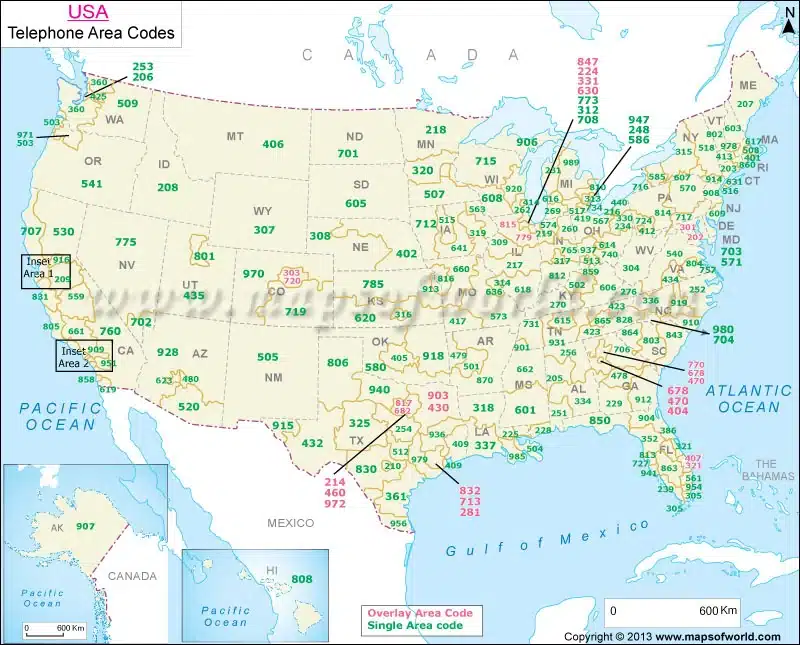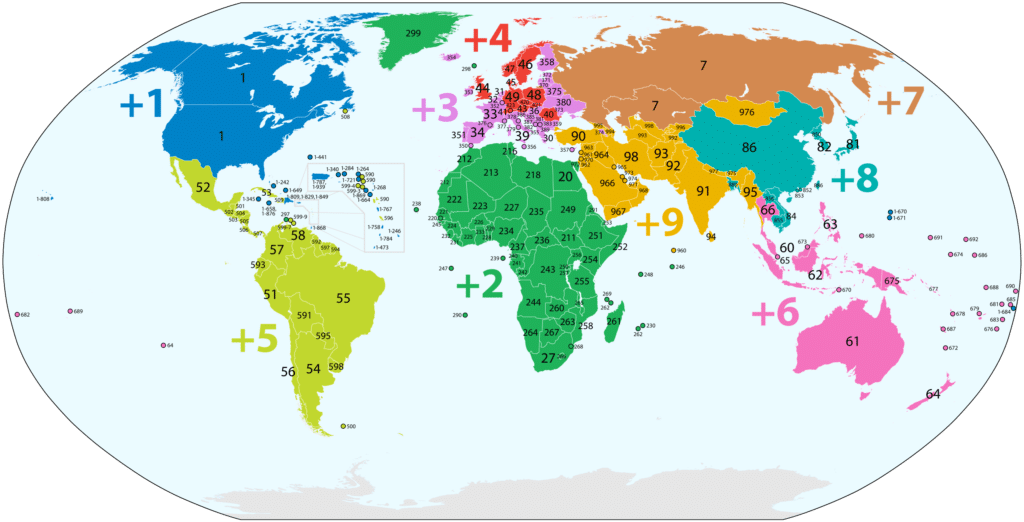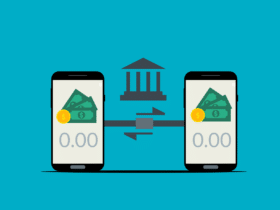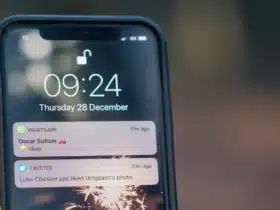Have you ever received a call or text message with a “+1” preceding the phone number? If you’re wondering what this means and why it’s there, you’re not alone. Let’s uncover the mystery behind this common phone number format.
Every country has a specific dial code for international calling. If you see +1 in front of a phone number, the call is coming from an area where the country code is 1, such as the USA, Canada, and some Caribbean countries.
The ‘+’ represents the global dial prefix when receiving an international call. Country codes help identify the origin of a call and are essential for making successful international calls.
What Does a +1 Mean in Front of a Phone Number?
If there is a +1 before a phone number, it indicates the country code of the person calling you on the phone. Since there are many phone numbers globally, these country codes make it easier to identify what part of the world you’re receiving a call from.
The USA, Canada, the Caribbean, and some U.S. territories in the Pacific all share the +1 dial code. The +1 code does not extend to some North American countries starting from Mexico and far into the south.
The ‘+’ symbol signifies an international dialing format peculiar to all countries. For example, the U.K. has ‘+44’ as their international dial code, while Spain has ‘+34’ before the actual phone numbers for the subscriber.
Having a country dial code means before you can complete an international call from any other region to America, you must insert the +1 code to enable the proper routing of the telecommunication lines involved.
What Is the Purpose of a Country Code in a Phone Number?

Country dialing codes were introduced in the early 1960s. The world is split into three major areas: the USA uses the number 1, Africa uses the number 2, 3, and 4 for Europe, and so on.
Typically, international telephone routing systems use country codes, allowing people on various continents and countries to converse with one another.
To call someone, you must use a phone number to connect the communication stream between you and the other person you want to reach.
Global phone communication is an extensive and complex system. Therefore, phone codes must be unique to create distinct codes for users.
A subscriber’s number capable of handling global phone communication requires country codes, area codes, and a seven-digit number.
For example, the USA has a combination of 11-digits for phone numbers. It consists of a 1-digit country code, a 3-digit area code, and a 7-digit phone number.
Country Codes Regulation
The International Telecommunication Union, established in 1865 with its headquarters in Switzerland, is responsible for regulating and organizing country codes.
This allows all countries that connect to global telecommunication lines and networks to properly connect calls back and forth to the people spread across the rest of the globe.
The International Telecommunication Union was initially created for the purpose of joining telegraph lines. After the onset of telephone communication, which was replacing the use of telegraphs, the ITU gained control of the transition and moderation of phone lines.
The International Telecommunication Union also generated the International Subscriber Dialing.
The subscriber dialing system allows individual communication between two or more subscribers without involving an operator whose job is to connect phone calls.
In other words, this system enables contact with persons in other countries through direct telecommunication.
When Should You Use Country Codes?

Knowing about country codes is worth your time if you often make international phone calls. But what is more impressive is learning when to use these dialing codes. So, when do you need to add a country code when making a phone call?
Regardless of location, you must use the country code as long as you are trying to communicate with someone living in an area with a different area code. The telecommunication system can quickly route and connect your phone call.
However, thanks to technology, you can simply dial only the area code and phone number while the system automatically corrects the phone number format. Modern smartphones that are internally coded for some countries automatically fill in the code.
How You Can Use Country Codes
This may seem unfamiliar if you have never had to put a call through to another country before.
To make a phone call from one country to a different one, you should add the exit code. If you do not include an exit code, the system will assume you are placing a call within the same country.
First, you need to dial the exit code to use a country code. For USA and Canada, the exit code is 011.
After which, you dial the country code and then the seven-digit numbers or the various numbers used in some countries. Putting all of these together will make it a very long phone number. However, it will enable the system to connect the call.
Let’s see another example. For instance, you will not need an exit code when you place a call between the U.S. and Canada. A country code will still be required but not an exit code, and this is because the call is within the +1 country code region.
What Are Area Codes?
We know you might start to mix up country codes with area codes, and here is a brief explanation.
The NANP separates the regions into NPAs (Numbering Plan Areas), which are exponentially encrypted with three digits in front of the phone number.
In other words, area codes are 3-digit numbers that show a specific telephone service in a geographic zone. The combination of an area code and the phone number serves as a destination routing direction in a public switched telephone network (PSTN).
Why Does North America Use +1 in Front of a Phone Number?
In North America, you will discover the country code +1 in front of a phone number because it is grouped in the same telecommunications region like the USA. Also, you may observe that smartphones bought in that region retain the country code was taken to other continents and countries.
In such situations, the user may need to unlock the phone to allow it to recognize other country codes. North American developers designated their area as +1, which hasn’t changed since then. And sometimes, their phones retain the code.
How to Find the Right Country Code
In a situation where you want to make an international call, you will need to search for the country code of the region and your exit code.
However, if you find it hard to get the country code of the area you want to place a call, click here for a comprehensive list.
After following the directions we have given you above, you will have no problem when you need to call any number in the world on the international system.
Do not forget that some countries do not connect their lines to global systems. Some locations or numbers can be private or unattainable from certain dialer sites.
The whole system is quite complex, but as long as you know the number you want to call, then there’s a high probability that you can reach that subscriber if you use the correct country code.
How You Can Remove +1 From Your Contacts Phone Number
Sometimes, you may want to remove the +1 country code from phone numbers on your contact list. Simply follow the outlined steps.
- Go to your phone and open the contacts app
- Go to your call settings
- uncheck add country code or show location
Please note this process may vary among different smartphones. So, you can search for country code from settings to find the option to remove +1 from your saved phone contacts.
You can also remove them manually by physically editing the contacts one after the other. However, this may be time-consuming and exhausting if you have a long contact list.
Conclusion
Using a country code while making a call means adding the recipient’s international dialing code to communicate with them across the miles. The +1 indicates that the phone number is recognized in a global dialing format.
‘1’ means you’re calling a subscriber in the USA, Canada, and other Caribbean nations. You need to enter ‘+1’ before the 10-digit USA number when dialing numbers from outside America.
You can remove country codes from the beginning of your contact’s phone number by physically editing the contacts one after the other or editing them by going to the phone’s settings.

















